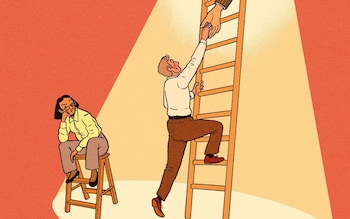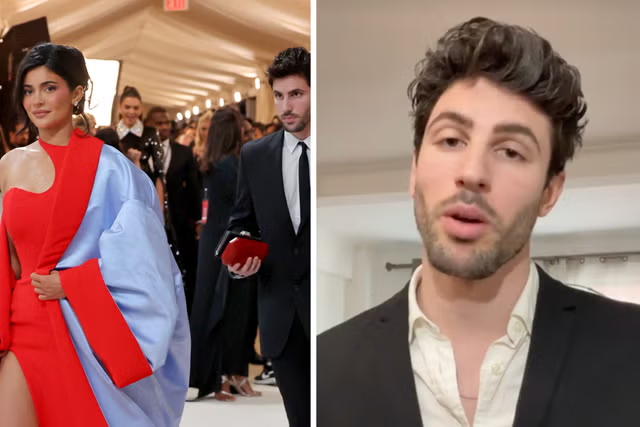A new generation has found a high-tech way to embrace a fashion rule that first boomed in popularity in the 1980s—color analysis.
For decades, trained consultants have worked with clients to help them determine which shades make them look good, and the colors they should avoid at all costs.
While experts offering color analysis can charge anywhere from $100 to upward of $450, a new generation on TikTok have found a way to do it for free, using AI chatbot ChatGPT.
The idea is that everyone has a set of shades they should reach for, based on skin tone, hair color and eye color, and these are split into four defined areas: winter, spring, summer and autumn.
"Imagine the joy of opening your wardrobe with all the colors that suit you staring back at you," Jules Standish aka "The Colour Counsellor" told Newsweek. Standish is a leading color consultant and color analyst in the U.K., is regularly featured on TV, and offers personalized consultations to customers.
While the benefits of having a personalized idea of your perfect colors are clear, a new generation is looking for a way to get their analysis without paying.
In a video with more than 9.7 million views, TikTok user @sharoncancio revealed how you can get your color analysis done for free with the help of ChatGPT. Newsweek reached out to @sharoncancio via email for comment.
ChatGPT, an AI chatbot developed by OpenAI, engages in humanlike conversations, answers questions and generates text leveraging large language models and machine learning. People are using it for all manner of things, from doctor's appointments to writing web code.
But can it really replace a consultation worth hundreds of dollars?
Intrigued, I gave it a try. The first step was to take a selfie in natural lighting—so far, so easy.
A language model, ChatGPT requires a written way to understand your appearance, so the next step is to find the Hex color code for your skin, eyes and hair.
Here, iPhone's built-in markup feature comes in, allowing you to use an eyedropper tool to find a color, and the "sliders" section to get the 6-figure code that starts with a hashtag.
Armed with the three color codes, I headed to ChatGPT and asked:
"Hi! My skin tone is #D8A28C, my eyes are #57473D, and my hair is #47433F. Which skin-tone color palette am I? In terms of spring, summer, winter and fall."
Quick as a flash, ChatGPT came back, and it was sure I had a warm undertone and gave me a color analysis of 'true autumn'.
I even asked it to tell me which colors would suit me, and which ones to ditch from my wardrobe.
ChatGPT told me to opt for olive, rust, terracotta, mustard, and camel, and avoid anything too cool or icy, such as bright blues or stark whites.
But is it right? I turned to Standish to find out.
"Wow! I would agree," she said, also dubbing me an 'autumn'. While ChatGPT matched my color palette, Standish added that the process is a lot more nuanced, while there is margin for error simply relying on technology alone.
"I have only seen two analyses and, yes, both were correct in my estimation, but I would need to see an awful lot more to determine exactly how accurate this system proves to be and its early days, compared to over 50 years of color analysis having been done the in-person way," Standish said.
There are plenty of ways that the at-home DIY analysis can go wrong, she added, from the lighting in the initial photograph not being natural enough, to wearing makeup that can result in a false analysis.
"You cannot do an accurate analysis if someone is wearing makeup," Standish said. "Also, you shouldn't have any background color to distract from the clarity of the person in the picture."
Similarly, the ChatGPT system asks for your hair color from a picture, which might not necessarily be your natural hair tone, giving a skewed analysis.
Finally, Standish said that she doesn't rely on looks, either: "My analysis looks at who the person is," she added. "Shades of colors need to harmonize with the true nature of the individual to bring out not only the best of their genetics to look their most attractive, but also to feel fabulous, energetically resonating with those bright, vibrant or muted and soft shades, depending on their temperaments."
While ChatGPT was quick to tell me which colors to wear, and which to avoid, Standish warned against the straightforward and generic advice.
"The ChatGPT seems very simplistic," she said. "Showing someone how to embrace their color palette is a feelgood therapy, a once-in-a-lifetime experience."
Disclaimer: The copyright of this article belongs to the original author. Reposting this article is solely for the purpose of information dissemination and does not constitute any investment advice. If there is any infringement, please contact us immediately. We will make corrections or deletions as necessary. Thank you.



